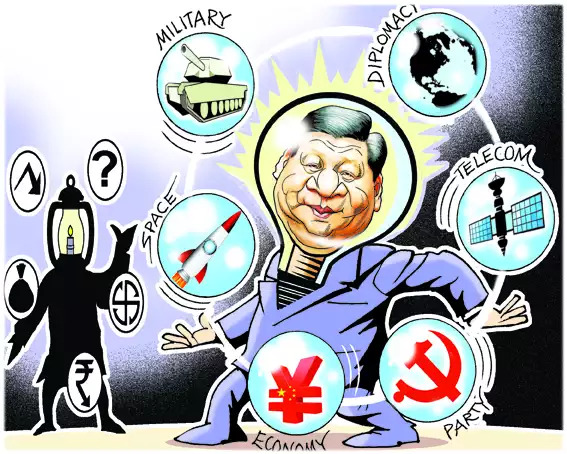
On the same day, ironically, the Rajya Sabha passed the constitutional amendment enabling the whacky 10% quota for the 'poor' in higher education and government jobs, an email arrived in my mailbox about an ongoing research project at Harvard comparing meritocracy in India and China. The Harvard project is based on the belief that the two largest and oldest societies in the world can learn from each other in managing talent despite their different political systems. As someone who has managed organisations, i have learnt that talent is the scarcest resource in society and having the right person in the right place makes all the difference. I was, therefore, deeply anguished when our Parliament passed a law that deliberately reduced opportunities for the most talented (to only 40%) in the areas where it matters most –governance and education.
Every democracy wrestles with the problem of how to combine excellence and fairness. Given historical inequities of caste, India established quotas for Dalits and tribals at the founding of the Republic. It was meant to be temporary but after 70 years not only does this quota persist but competitive politics has expanded it to other backward castes. As a result, the self-esteem and status of the lower castes has risen but their economic status has not (except for a 'creamy layer'). The reasons are (1) a rotten education system that is negligent of outcomes and fails to equip students for employment; (2) an economic model that has failed to produce high quality jobs in abundance unlike the Far East model of the Asian tigers and China.
We are amazed at the rise of China but we don't appreciate the role meritocracy has played in this great miracle. The ideal of political meritocracy has existed in China from ancient times. More than 2,500 years ago Confucius said that those who govern should do so through merit and virtue, not inherited status. From the 10th century to 1905, Chinese officials were selected primarily though competitive exams and promoted through rigorous performance assessments. The Chinese debated constantly which abilities and virtues matter for governance and how to assess and institutionalise them by selecting and promoting superior public officials. The concept of political meritocracy spread from China to the West, oddly enough via British India. The first European power to implement a meritocratic civil service was the British empire in India.
According to Daniel Bell, author of The China Model: Political Meritocracy and the Limits of Democracy, the ancient ideal of merit was restored in China by Deng Xiaoping in 1978. We know a lot about China's economic reforms but have ignored its political reforms because we judge politics only through the lens of electoral democracy and human rights. Bell tells us that in the past four decades, a relentless pursuit of meritocracy through high quality education and placing talented persons in crucial spots in the country's governance has hugely enhanced the state's leadership capacity. The focus on merit has not only improved efficiency but also impacted equity by almost eliminating poverty and turned China into a middle-class nation. Although corruption is pervasive and democratic accountability is absent, the ordinary person is satisfied with a social contract that has brought prosperity and good governance to all.
The rise of India after 1991 has also significantly reduced poverty and expanded the middle class. But its success pales in comparison to China's. What the Harvard project is likely to confirm is that the difference between the two nations lies in meritocracy and state capacity. India's advantage over China lies in giving its people voice through a vigorous democracy. But its relative failure lies in poorer governance and education. Had India diverted some of its political energy away from reservations and focussed more in enhancing state capacity and placing the most talented officials in the vital sectors of education and governance, the ordinary citizen would have been much better off. With better schools, the most disadvantaged would have had greater opportunities and there would have been greater upward mobility among the poor and low-born.
Despite its flaws, i doubt if argumentative Indians will exchange their system for China's. However, there is much to learn from China's pursuit of meritocracy. Elected politicians in a democracy will usually privilege the interests of today's voters at the expense of future generations – by, for example, not placing the most talented ministers and officials in education and health. This is why a fair number of blockheads end up becoming teachers, policemen, and lower court judges. Bell shows how a relentless focus on merit in China both at the entry level and throughout an official's career, even at the lowest levels of government, results in solving people's daily problems and gives political leaders legitimacy in people's eyes.
The new, 10% reservation in India is hugely flawed and will probably not survive judicial review. Even if it does, it is time to revisit the old social contract based on quotas. Diversity is an excellent objective but there are better ways to implement affirmative action. Quotas are also bad because they divert the nation's energy from nurturing talent. India's challenge in the 21st century lies in combining democracy and meritocracy to ensure that the most talented lead at all levels. So, let us learn how China has delivered both prosperity and equity. When high class education is married to meritocratic governance, then low wages actually become an advantage in an open trading system which translates into high wages within a generation. This is how to transform India.